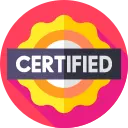FREE
daily Instructor: Dr. Joann RochaCourse Overview
Understanding iPhone Camera Fundamentals for Low Light
iPhone Camera Hardware & Software in Low Light
- Understanding the physical sensor size, aperture, and lens elements specific to various iPhone models and their impact on low-light performance.
- Gaining deep knowledge of computational photography features, including Photonic Engine, Deep Fusion, Smart HDR, and Night Mode, explaining how these processes capture and combine multiple exposures to enhance detail and reduce noise in challenging light.
- Analyzing the trade-offs and advantages of different iPhone generations in low-light scenarios, enabling informed decision-making based on available hardware.
Exposure Triangle in Challenging Conditions
- Mastering manual control over ISO sensitivity to balance noise levels with image brightness, understanding the acceptable ISO ranges for different iPhone models.
- Controlling shutter speed to manage motion blur versus light intake, learning specific shutter speeds for capturing sharp images of static subjects versus intentional blur for light trails.
- Understanding the fixed aperture limitations of iPhone cameras and how to compensate for this in low light using other exposure controls and external tools.
- Applying exposure compensation effectively to fine-tune brightness when automatic metering struggles with dark scenes, ensuring correct subject exposure without blowing out highlights.
Advanced Camera App Settings & Controls
- Utilizing the native iPhone camera app's hidden features and gestures for quick adjustments in the dark, such as tap-to-focus and exposure lock.
- Exploring third-party camera applications that unlock manual control over shutter speed, ISO, white balance, and focus, detailing their interfaces and optimal settings for low-light capture.
- Setting up custom presets within advanced camera apps to quickly switch between optimized settings for different night photography or videography scenarios, such as starry skies versus cityscapes.
Advanced Low-Light Photography Techniques
Long Exposure Photography & Light Trails
- Implementing long exposure techniques with an iPhone to capture light trails from vehicles, create silky water effects, and render motion blur artistically in night scenes.
- Selecting appropriate external tools like tripods and remote shutters or intervalometers to prevent camera shake during extended exposures.
- Calculating optimal shutter speeds and ISO settings for various long exposure effects, considering ambient light and desired motion rendition.
Night Portraiture & Street Photography
- Mastering techniques for illuminating subjects in low light using available streetlights, neon signs, or subtle portable LED lights for dramatic effects.
- Utilizing Portrait Mode effectively in challenging lighting, understanding its limitations and how to work around them to achieve professional-looking bokeh.
- Developing strategies for discreet street photography at night, including anticipating movement and capturing candid moments with minimal disruption.
- Controlling focus precisely on subjects in near darkness, using focus peaking features in third-party apps to ensure sharp results.
Astrophotography & Star Trails
- Identifying optimal locations and conditions for iPhone astrophotography, including light pollution maps and lunar phases.
- Configuring camera settings for capturing the Milky Way and individual stars, including specific shutter speeds, ISOs, and noise reduction settings for maximum detail.
- Techniques for stacking multiple long exposure images using external software to reduce noise and enhance star detail, creating stunning celestial photographs.
- Creating captivating star trail photography using sequential long exposures and post-processing software for blending.
HDR, Deep Fusion, and ProRAW/ProRes in Low Light
- Understanding the technical process behind Smart HDR and Deep Fusion, and how they intelligently merge multiple exposures for improved dynamic range and detail retention in low-light photos.
- Leveraging ProRAW for maximum flexibility in post-processing low-light images, specifically for recovering shadow detail, managing highlights, and performing advanced noise reduction without loss of quality.
- Analyzing the file size implications and storage requirements for shooting in ProRAW, and developing an efficient workflow for managing these larger files.
Focusing in Near Darkness
- Mastering manual focus techniques using third-party camera apps that offer focus peaking or magnified views, ensuring critical sharpness on subjects that autofocus struggles with.
- Utilizing hyperfocal distance principles for landscape and street photography at night, ensuring maximum depth of field without precise subject focusing.
- Implementing creative focusing strategies like rack focus for cinematic effects in low-light videography.
Mastering Night Videography with iPhone
Controlling Exposure & White Balance for Video
- Applying manual exposure controls (ISO, shutter speed, exposure compensation) to achieve consistent and desirable brightness in night video, avoiding sudden shifts in light.
- Achieving accurate white balance in mixed or challenging night lighting conditions, using custom white balance settings to ensure consistent color rendition throughout a video sequence.
- Understanding how different light sources (LED, incandescent, streetlights) affect color temperature and how to compensate for these shifts.
Stabilization Techniques for Low-Light Video
- Maximizing the effectiveness of iPhone's built-in optical and sensor-shift image stabilization in low light, understanding its limits and how to augment it.
- Employing external stabilization tools such as gimbals, tripods, and monopods for fluid, shake-free night video footage, detailing specific use cases for each.
- Utilizing body mechanics and handheld camera movements that minimize shake and enhance cinematic quality when shooting without external stabilizers.
Frame Rates & Shutter Angles for Night Scenes
- Selecting optimal frame rates (e.g., 24fps, 30fps) for cinematic night video versus higher frame rates (e.g., 60fps) for smoother motion or slow-motion effects, considering light availability.
- Applying the 180-degree shutter rule to achieve natural-looking motion blur in night video, balancing shutter speed with available light to avoid excessively dark footage.
- Understanding the relationship between frame rate, shutter speed, and motion rendition, and how to intentionally deviate from standard rules for creative effect in low-light environments.
Filming in Log/Flat Profiles (if applicable to iPhone models)
- Understanding the benefits of shooting in a Log or flat color profile for videography, specifically for retaining maximum dynamic range and color information in challenging night scenes.
- Learning to properly expose Log footage to avoid crushing blacks or blowing out highlights, understanding the 'expose to the right' principle in this context.
- Preparing Log footage for color grading in post-production, applying LUTs (Look Up Tables) as a starting point, and making precise color adjustments.
Audio Capture in Challenging Environments
- Implementing strategies for clean audio recording during night shoots, considering ambient noise from city environments, wind, and distant sounds.
- Utilizing external microphones (lavalier, shotgun, stereo) with iPhone for superior audio quality, detailing connection methods and optimal placement.
- Techniques for isolating desired sound and minimizing unwanted noise in noisy nocturnal settings.
Post-Production for Low-Light & Night Content
Noise Reduction & Sharpening Strategies
- Applying advanced noise reduction techniques to both photos and videos, differentiating between luminance noise and chroma noise and targeting each effectively without sacrificing detail.
- Employing selective sharpening methods to enhance critical details while avoiding over-sharpening artifacts that can exacerbate noise in low-light images.
- Understanding the interplay between noise reduction and sharpening, and finding the optimal balance for clean, detailed results.
Color Grading for Night Scenes
- Mastering color correction techniques to achieve natural and consistent colors in challenging night lighting, including correcting color casts from artificial lights.
- Implementing creative color grading to establish mood and atmosphere in night photos and videos, utilizing color theory to evoke specific emotions (e.g., cool blues for serenity, warm yellows for urban energy).
- Working with HSL (Hue, Saturation, Luminance) adjustments to fine-tune specific color ranges, such as enhancing city lights or making skies deeper.
Exposure Recovery & Dynamic Range Expansion
- Utilizing advanced tools in photo and video editing software to recover detail in underexposed shadows and manage overexposed highlights, expanding the perceivable dynamic range.
- Techniques for local adjustments, such as dodging and burning, to selectively brighten or darken areas of an image, guiding the viewer's eye.
- Understanding the limitations of file formats (JPEG vs. ProRAW/Log) in terms of exposure recovery latitude and how to maximize each.
Retouching & Enhancing Night Portraits
- Applying subtle skin retouching and enhancement techniques that preserve natural texture while flattering subjects in night portraits.
- Techniques for brightening eyes and adding sparkle, as well as enhancing hair and clothing details without looking artificial.
- Managing light falloff and shadows on faces in low-light conditions, using editing tools to sculpt light and shape features.
Workflow for Stills and Video
- Establishing an efficient post-production workflow for both low-light photos and videos, from import and organization to editing and export.
- Utilizing mobile and desktop editing applications, understanding their respective strengths and weaknesses for specific tasks like noise reduction, color grading, and compositing.
- Implementing batch processing and synchronization techniques to maintain consistency across multiple images or video clips from a single night shoot.
Practical Applications & Creative Storytelling in Darkness
Utilizing Available Light & Artificial Light Sources
- Developing an eye for identifying and strategically using existing light sources like streetlights, storefronts, car headlights, and moonlight to illuminate subjects and scenes.
- Incorporating portable LED panels, small flashes, or even phone flashlights as subtle fill or accent lights to add dimension and highlight details without overpowering the natural ambiance.
- Understanding the directionality, quality, and color temperature of various light sources and how they impact the mood and visual narrative of the scene.
Composing for Night Scenes
- Applying classic compositional rules like the rule of thirds, leading lines, and symmetry to night photography and videography, adapting them for dark environments.
- Utilizing negative space and silhouettes to create powerful, minimalist compositions that emphasize form and contrast against the night sky or illuminated elements.
- Framing subjects effectively within urban environments, using architectural elements, windows, and doorways as natural frames to enhance depth and interest.
Developing a Unique Night Vision
- Cultivating a personal aesthetic for low-light and night shooting, moving beyond technical execution to creative expression.
- Analyzing successful night photographers and cinematographers to understand their use of light, shadow, and color, and integrating these insights into personal projects.
- Experimenting with different styles and approaches, such as noir, moody, vibrant, or documentary, to find a distinctive voice in night capture.
Safety & Planning for Night Shoots
- Implementing essential safety precautions when shooting in urban or remote locations at night, including awareness of surroundings, personal security, and appropriate gear.
- Thorough planning of night shoots, including scouting locations during daylight, checking weather forecasts, and understanding the specific challenges and opportunities each location presents after dark.
- Preparing a comprehensive gear kit, including extra batteries, power banks, appropriate lighting accessories, and protection for the iPhone against environmental elements.
FlashCards
External Resources
Add-On Features
Expert Instructor
Get live study sessions from experts
Honorary Certification
Receive a certificate before completing the course.
Currency
Sign in to change your currency
I'm not ready to enroll?
Tell us why, because it matters.
Enroll With a Key
Course Benefits
Get a Job
Use your certificate to stand out and secure new job opportunities.
Earn More
Prove your skills to secure promotions and strengthen your case for higher pay
Learn a Skill
Build knowledge that stays with you and works in real life.
Lead Teams
Use your certificate to earn leadership roles and invitations to industry events.
Visa Support
Use your certificate as proof of skills to support work visa and immigration applications.
Work on Big Projects
Use your certificate to qualify for government projects, enterprise contracts, and tenders requiring formal credentials.
Win Partnerships
Use your certified expertise to attract investors, get grants, and form partnerships.
Join Networks
Use your certificate to qualify for professional associations, advisory boards, and consulting opportunities.
Stand Out Professionally
Share your certificate on LinkedIn, add it to your CV, portfolio, job applications, or professional documents.
Discussion Forum
Join the discussion!
No comments yet. Sign in to share your thoughts and connect with fellow learners.
Frequently Asked Questions
For detailed information about our iPhone Cinematography & Photography: Low-Light & Night Shooting Strategies course, including what you’ll learn and course objectives, please visit the "About This Course" section on this page.
The course is online, but you can select Networking Events at enrollment to meet people in person. This feature may not always be available.
We don’t have a physical office because the course is fully online. However, we partner with training providers worldwide to offer in-person sessions. You can arrange this by contacting us first and selecting features like Networking Events or Expert Instructors when enrolling.
Contact us to arrange one.
This course is accredited by Govur University, and we also offer accreditation to organizations and businesses through Govur Accreditation. For more information, visit our Accreditation Page.
Dr. Joann Rocha is the official representative for the iPhone Cinematography & Photography: Low-Light & Night Shooting Strategies course and is responsible for reviewing and scoring exam submissions. If you'd like guidance from a live instructor, you can select that option during enrollment.
The course doesn't have a fixed duration. It has 25 questions, and each question takes about 5 to 30 minutes to answer. You’ll receive your certificate once you’ve successfully answered most of the questions. Learn more here.
The course is always available, so you can start at any time that works for you!
We partner with various organizations to curate and select the best networking events, webinars, and instructor Q&A sessions throughout the year. You’ll receive more information about these opportunities when you enroll. This feature may not always be available.
You will receive a Certificate of Excellence when you score 75% or higher in the course, showing that you have learned about the course.
An Honorary Certificate allows you to receive a Certificate of Commitment right after enrolling, even if you haven’t finished the course. It’s ideal for busy professionals who need certification quickly but plan to complete the course later.
The price is based on your enrollment duration and selected features. Discounts increase with more days and features. You can also choose from plans for bundled options.
Choose a duration that fits your schedule. You can enroll for up to 180 days at a time.
No, you won't. Once you earn your certificate, you retain access to it and the completed exercises for life, even after your subscription expires. However, to take new exercises, you'll need to re-enroll if your subscription has run out.
To verify a certificate, visit the Verify Certificate page on our website and enter the 12-digit certificate ID. You can then confirm the authenticity of the certificate and review details such as the enrollment date, completed exercises, and their corresponding levels and scores.
Can't find answers to your questions?
Certification Guide

Complete the Course
Begin the course by selecting your experience level in the course content section:
Beginner: Master the material with interactive questions and enough time.
Intermediate: Get certified faster with hints and balanced questions.
Advanced: Challenge yourself with more questions and less time

Earn Your Certificate
To download and share your certificate, you must achieve a combined score of at least 75% on all questions answered.





